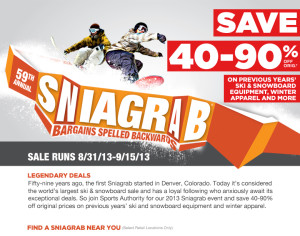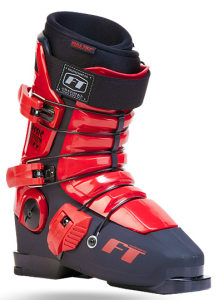How to determine the right size and style of rental boot available at Mt Crescent, by Hugh Finerty, veteran ski instructor at Mt Crescent.
The fit of the ski boot is essential for two reasons. First, is that the boot is what transfers the pressure from the foot, ankle and leg to the skis. If the boot is too loose, then the skis will not respond and you will feel that you lack control.
Second, an improperly fit boot may become very uncomfortable throughout the day and could result in blisters and sore feet and legs.
It is worth taking extra time to find the proper size and style. Mt Crescent has 3 styles of the ski boots in the rental shop during the 2012-2013 season. Each style will provide a slightly different fit.
Not only is finding the right style a trial and error process, but determining the right size is just as important.
I wrote a blog post recently about ski socks in the “My Favorite Gear Series” noting the difference between women’s and men’s feet. Women’s feet are anatomically different than men’s. Statistically, women have thicker ankles and calves, higher arches, narrower heals, and women’s ankles are about a quarter of an inch closer to the ground than the man’s ankle of the same size. A man’s foot size of 9, is comparable to a woman’s foot size of 8 (1 whole size smaller).
When sizing ski boots for men, the proper size of ski boot is between 1 and 2 shoe sizes smaller than their street shoe size. My street shoe size is between 8.5-9.0. My ski boot is a size 7. I wear a SmartWool PhD Medium Ski Sock.
 At the time I am writing this, Backwoods has the Men’s sock on sale for 12.98 per pair, usually 25.95, Click Here for details.
At the time I am writing this, Backwoods has the Men’s sock on sale for 12.98 per pair, usually 25.95, Click Here for details.
When sizing boots for women, remember that the Mt Crescent rental shop’s boots use men’s sizing. Therefore, you will want to start 1-1/2 to 2 1/2 sizes smaller than your street shoe size. A thick or thin sock will have a slight effect on sizing. Since there are a variety of boot styles at Mt Crescent, both men and women will be able to find a good fit.
There are mainly 3 styles of boots in the Mt Crescent rental shop during the 2012-2013 season.
1) Standard 3 buckle boot – fits most feet. Don’t choose these if you have large calves
2) Rear Entry with Ankle/Instep adjustment (has the red lever on the back). Fits most feet.
3) Rear Entry with forefoot adjustment and boot top buckle. This boot works well for people with large ankles and/or insteps.
First, determine the size with which you begin. Then, visually inspect your foot to determine with which style you wish to start. This is trial and error… be prepared to try on 3-4 different boots….
Second, put on one boot and kick the back of your heel into the floor to set the foot/heel “back” in the boot. If your toe is touching the front of the boot after putting your heel to the back of the boot, the boot is too small and move 1/2 size larger.
Ensure the foot remains set into the back of the boot, begin tightening the buckle on the instep, then the toe buckle, then the calf buckles (lowest first).
Be sure that only the sock and thin base layer are inside the boot. Do not have pants, snow gator etc stuffed into the cuff of the boot. Stuffing clothing into the cuff of the boot will cut-off circulation and cause chaffing.
The toes should wiggle, the forefoot should “fit like a glove”, the ankle should be snug with no side-to-side movement. The heel can lift up to 1/2″. The calf should be comfortable (don’t cut off circulation here). The boot should be snug without cutting off circulation or “pressure points”. If these are not achieved, try a different size or style of boot.
If your are between sizes, then you can make some adjustments with thicker or thinner socks.
You will be in these boots all day, so make sure that there are not pressure points or points that “hurt” before leaving the rental shop at the beginning of the day. Take your time and ask questions. The staff in the rental department at Mt Crescent are very helpful and understand the need for a proper boot fit.
And remember to always take a lesson at Mt Crescent when learning to ski. They offer a quick 45 minute introductory lesson on weekends called Station Rotation Lessons. They also offer Private and Semi-Private Lessons daily. To book a lesson or to find out more information on lessons, please click on this Book a Lesson link.




